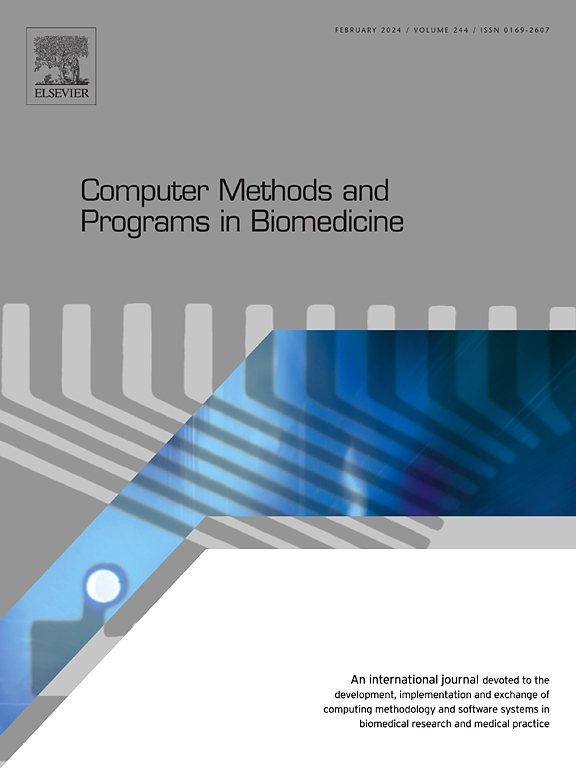SeLa-MIL: Developing an instance-level classifier via weakly-supervised self-training for whole slide image classification
IF 4.9
2区 医学
Q1 COMPUTER SCIENCE, INTERDISCIPLINARY APPLICATIONS
引用次数: 0
Abstract
Background and Objective
Pathology image classification is crucial in clinical cancer diagnosis and computer-aided diagnosis. Whole Slide Image (WSI) classification is often framed as a multiple instance learning (MIL) problem due to the high cost of detailed patch-level annotations. Existing MIL methods primarily focus on bag-level classification, often overlooking critical instance-level information, which results in suboptimal outcomes. This paper proposes a novel semi-supervised learning approach, SeLa-MIL, which leverages both labeled and unlabeled instances to improve instance and bag classification, particularly in hard positive instances near the decision boundary.
Methods
SeLa-MIL reformulates the traditional MIL problem as a novel semi-supervised instance classification task to effectively utilize both labeled and unlabeled instances. To address the challenge where all labeled instances are negative, we introduce a weakly supervised self-training framework by solving a constrained optimization problem. This method employs global and local constraints on pseudo-labels derived from positive WSI information, enhancing the learning of hard positive instances and ensuring the quality of pseudo-labels. The approach can be integrated into end-to-end training pipelines to maximize the use of available instance-level information.
Results
Comprehensive experiments on synthetic datasets, MIL benchmarks, and popular WSI datasets demonstrate that SeLa-MIL consistently outperforms existing methods in both instance and bag-level classification, with substantial improvements in recognizing hard positive instances. Visualization further highlights the method’s effectiveness in pathology regions relevant to cancer diagnosis.
Conclusion
SeLa-MIL effectively addresses key challenges in MIL-based WSI classification by reformulating it as a semi-supervised problem, leveraging both weakly supervised learning and pseudo-labeling techniques. This approach improves classification accuracy and generalization across diverse datasets, making it valuable for pathology image analysis.
求助全文
约1分钟内获得全文
求助全文
来源期刊

Computer methods and programs in biomedicine
工程技术-工程:生物医学
CiteScore
12.30
自引率
6.60%
发文量
601
审稿时长
135 days
期刊介绍:
To encourage the development of formal computing methods, and their application in biomedical research and medical practice, by illustration of fundamental principles in biomedical informatics research; to stimulate basic research into application software design; to report the state of research of biomedical information processing projects; to report new computer methodologies applied in biomedical areas; the eventual distribution of demonstrable software to avoid duplication of effort; to provide a forum for discussion and improvement of existing software; to optimize contact between national organizations and regional user groups by promoting an international exchange of information on formal methods, standards and software in biomedicine.
Computer Methods and Programs in Biomedicine covers computing methodology and software systems derived from computing science for implementation in all aspects of biomedical research and medical practice. It is designed to serve: biochemists; biologists; geneticists; immunologists; neuroscientists; pharmacologists; toxicologists; clinicians; epidemiologists; psychiatrists; psychologists; cardiologists; chemists; (radio)physicists; computer scientists; programmers and systems analysts; biomedical, clinical, electrical and other engineers; teachers of medical informatics and users of educational software.
 求助内容:
求助内容: 应助结果提醒方式:
应助结果提醒方式:


